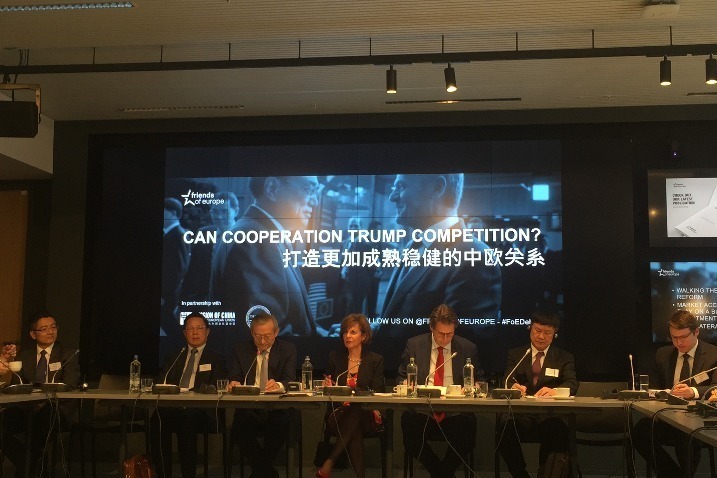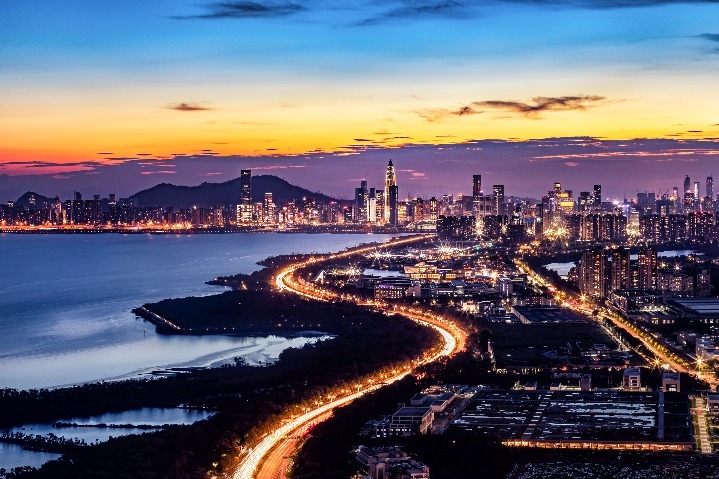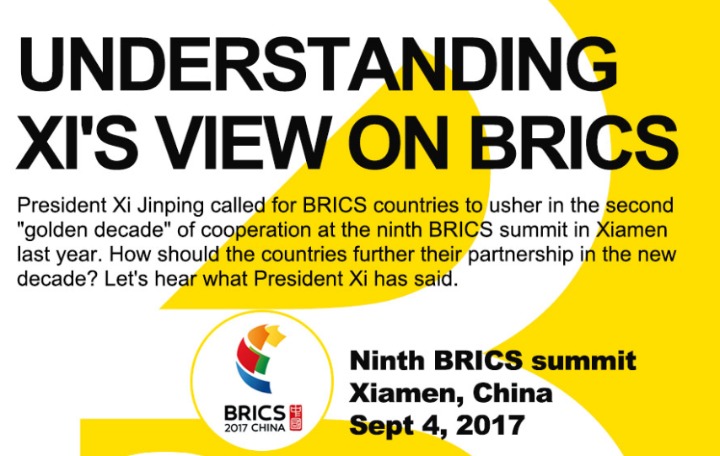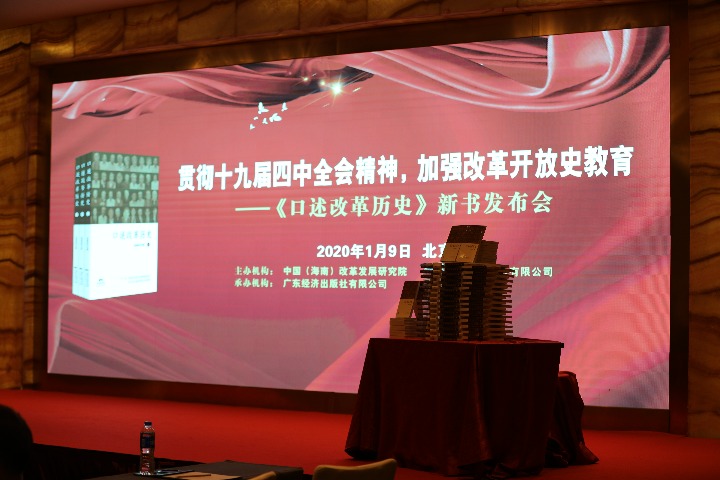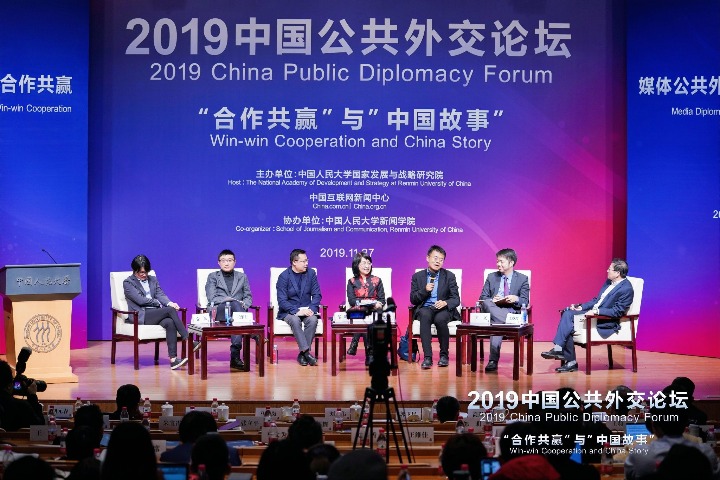Sustainably financing the Belt, Road Initiative
By Sherry Madera |
China Watch |
Updated: 2018-04-17 10:05
The Belt and Road Initiative is a highly ambitious project aiming to build connectivity between Asia and the rest of the world. Launched in 2013 by President Xi Jinping, the initiative has captured international attention as the need for additional infrastructure across Asia is clear. Asia’s growth is leading the world; not only China and India, but also the Association of Southeast Asian Nations, whose member states are projected to constitute the world’s fourth-largest economy by 2030.
Connectivity, adequate energy production and efficient trade routes are more in demand than ever. However, this infrastructure requires financing — investment that governments alone cannot provide. Indeed, mobilizing private capital into infrastructure is an essential enabler to the success of the Belt and Road Initiative. The Asian Development Bank has identified a funding gap of at least $1.7 trillion a year over the next decade in Asian infrastructure alone. During the Belt and Road Forum for International Cooperation, held in Beijing in May, President Xi emphasized the need to attract more private financing to the initiative. We now need to consider how best to meet this need.
The Belt and Road Initiative is primarily a challenge of risk management. This includes geopolitical risk, environmental risk, risk of returns and risk of completion. The global financial system is driven by risk and quantifying and managing that risk through pricing financial instruments and matching them to the best providers of capital. The initiative – though vast and complicated – is no different. The complexity of the initiative and the relative scarcity of risk capital does, however, encourage us to consider how best to deploy capital along both its waterborne and overland routes.
How can we ensure that early-stage risk capital is put to its best use? How can financiers with the highest risk appetites recycle their capital into the next project effectively? How can we leverage capital markets to create a Belt and Road infrastructure asset class catering to projects in over 65 countries?
Belt and Road projects are not new. The World Bank has been financing infrastructure projects since 1947. The ADB invested in its first project in 1967 in Indonesia. What is new is the initiative’s ambition to weave individual projects into a connected story of cross-border prosperity. The initiative aspires to connect the modern world’s goods, services, people, knowledge and cultures. Multilateral development banks, including the World Bank and ADB, play a critical role in this connectivity alongside other government-backed investment mechanisms.
In May, China pledged an additional 100 billion yuan ($15.8 billion) in funding through its policy banks and funds – but they cannot work alone. While Belt and Road projects are not new, nor is the collaboration between multilateral development banks and private capital, the size of the overall project takes the discussion to a new level. It makes the need for efficient use of capital even more important. New multilateral development banks have entered the market (including the Asian Infrastructure Investment Bank and New Development Bank) and embed green finance, capital efficiency and plans to leverage their credit ratings at their core.
Notably, this call for increased private financing for infrastructure sits alongside a call for prioritizing sustainable infrastructure build out. Whether we are talking about ports, energy facilities, rail connections or telecom infrastructure – new infrastructure makes an economic impact far into the future. Equally, their impact on the environment and society are extensive. Therefore, all participants must ensure they are “greening the Belt and Road Initiative”, and that such practices are in everyone’s interests. This is not only to ensure we are not further damaging our planet, but that we are not starting projects that risk being abandoned.
Increasingly, projects that do not meet green standards are not attracting finance. Therefore, they are also failing to ensure an initiative project that meets global environmental standards – ones that will help to ensure the sustainability of financing through to completion. Sustainability in the context of the Belt and Road needs to address both environmental standards as well as sustained financing through the project life cycle. Otherwise, there is a very real risk of stranded assets.
So, how can the financial industry meet this challenge to provide adequate sustainable financing for the Belt and Road? The creation of harmonized standards for projects is an important step. It will support efficient matching of capital to project phases and a common language for investors to enter and exit a project and accurately price risks. This will allow the most appropriate financing to participate at each phase of a project life cycle and for financing to do what it does best – flow. Environmental and green finance standards, infrastructure definitions by type and geography, project building standards, and insurance products designed for this new environment will all aid the efficiency of financing the initiative.
It may seem like a lot of work to get this system of standards and definitions in place; and it is. However, the rewards of getting it right are enormous. It is projected by some that the Belt and Road will require $900 billion of financing. This quantifies only the main infrastructure projects for the initiative. The “BRI 2.0” opportunities such as hospitals, schools, secondary road and rail connectivity, and power production along the routes will require even more capital. The global financial community has an enormous opportunity to rise together to meet the Belt and Road Initiative’s ambitious needs and deploy efficient sustainable capital to build prosperity for all.
Sherry Madera is a special adviser in Asia for City of London Corp. The views do not necessarily reflect those of China Watch.
All rights reserved. Copying or sharing of any content for other than personal use is prohibited without prior written permission.
The Belt and Road Initiative is a highly ambitious project aiming to build connectivity between Asia and the rest of the world. Launched in 2013 by President Xi Jinping, the initiative has captured international attention as the need for additional infrastructure across Asia is clear. Asia’s growth is leading the world; not only China and India, but also the Association of Southeast Asian Nations, whose member states are projected to constitute the world’s fourth-largest economy by 2030.
Connectivity, adequate energy production and efficient trade routes are more in demand than ever. However, this infrastructure requires financing — investment that governments alone cannot provide. Indeed, mobilizing private capital into infrastructure is an essential enabler to the success of the Belt and Road Initiative. The Asian Development Bank has identified a funding gap of at least $1.7 trillion a year over the next decade in Asian infrastructure alone. During the Belt and Road Forum for International Cooperation, held in Beijing in May, President Xi emphasized the need to attract more private financing to the initiative. We now need to consider how best to meet this need.
The Belt and Road Initiative is primarily a challenge of risk management. This includes geopolitical risk, environmental risk, risk of returns and risk of completion. The global financial system is driven by risk and quantifying and managing that risk through pricing financial instruments and matching them to the best providers of capital. The initiative – though vast and complicated – is no different. The complexity of the initiative and the relative scarcity of risk capital does, however, encourage us to consider how best to deploy capital along both its waterborne and overland routes.
How can we ensure that early-stage risk capital is put to its best use? How can financiers with the highest risk appetites recycle their capital into the next project effectively? How can we leverage capital markets to create a Belt and Road infrastructure asset class catering to projects in over 65 countries?
Belt and Road projects are not new. The World Bank has been financing infrastructure projects since 1947. The ADB invested in its first project in 1967 in Indonesia. What is new is the initiative’s ambition to weave individual projects into a connected story of cross-border prosperity. The initiative aspires to connect the modern world’s goods, services, people, knowledge and cultures. Multilateral development banks, including the World Bank and ADB, play a critical role in this connectivity alongside other government-backed investment mechanisms.
In May, China pledged an additional 100 billion yuan ($15.8 billion) in funding through its policy banks and funds – but they cannot work alone. While Belt and Road projects are not new, nor is the collaboration between multilateral development banks and private capital, the size of the overall project takes the discussion to a new level. It makes the need for efficient use of capital even more important. New multilateral development banks have entered the market (including the Asian Infrastructure Investment Bank and New Development Bank) and embed green finance, capital efficiency and plans to leverage their credit ratings at their core.
Notably, this call for increased private financing for infrastructure sits alongside a call for prioritizing sustainable infrastructure build out. Whether we are talking about ports, energy facilities, rail connections or telecom infrastructure – new infrastructure makes an economic impact far into the future. Equally, their impact on the environment and society are extensive. Therefore, all participants must ensure they are “greening the Belt and Road Initiative”, and that such practices are in everyone’s interests. This is not only to ensure we are not further damaging our planet, but that we are not starting projects that risk being abandoned.
Increasingly, projects that do not meet green standards are not attracting finance. Therefore, they are also failing to ensure an initiative project that meets global environmental standards – ones that will help to ensure the sustainability of financing through to completion. Sustainability in the context of the Belt and Road needs to address both environmental standards as well as sustained financing through the project life cycle. Otherwise, there is a very real risk of stranded assets.
So, how can the financial industry meet this challenge to provide adequate sustainable financing for the Belt and Road? The creation of harmonized standards for projects is an important step. It will support efficient matching of capital to project phases and a common language for investors to enter and exit a project and accurately price risks. This will allow the most appropriate financing to participate at each phase of a project life cycle and for financing to do what it does best – flow. Environmental and green finance standards, infrastructure definitions by type and geography, project building standards, and insurance products designed for this new environment will all aid the efficiency of financing the initiative.
It may seem like a lot of work to get this system of standards and definitions in place; and it is. However, the rewards of getting it right are enormous. It is projected by some that the Belt and Road will require $900 billion of financing. This quantifies only the main infrastructure projects for the initiative. The “BRI 2.0” opportunities such as hospitals, schools, secondary road and rail connectivity, and power production along the routes will require even more capital. The global financial community has an enormous opportunity to rise together to meet the Belt and Road Initiative’s ambitious needs and deploy efficient sustainable capital to build prosperity for all.
Sherry Madera is a special adviser in Asia for City of London Corp. The views do not necessarily reflect those of China Watch.
All rights reserved. Copying or sharing of any content for other than personal use is prohibited without prior written permission.





